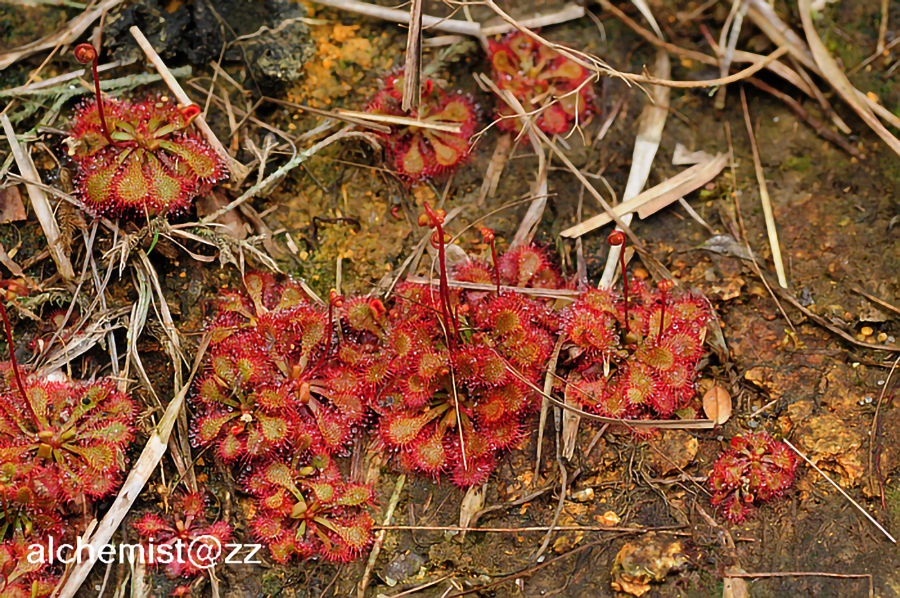- Scientific Name: Drosera burmanni Vahl
- Ref: Symb. Bot. 3: 50. 1794.
- English Common Name: tropical sundew
- Chinese Common Name: 锦地罗 jǐndìluó
- Family: Droseraceae
- Genus: Drosera
- Distribution: Shaded wet places, ridges between rice fields, soggy soils, lowland to mountain areas; sea level to 1500 m. S Fujian, Guangdong, Guangxi, Hainan, Taiwan, Yunnan [E and SE Asia, Australia].
Herbs annual or biennial, with few fibrous roots. Stem unbranched, extremely short, sometimes to 1 cm when growing in shade, not forming a tuber below ground. Leaves forming a flat rosette, subsessile or petiolate; stipule 3-7 mm, connate with petiole at base, 3-fid, lobes laciniate; petiole short or absent; leaf blade yellowish green or red to reddish violet, cuneate to obovate-spatulate, 6-10 × 5-7 mm, base attenuate, with glandular trichomes or glabrous, apex fimbriate. Inflorescence scapiform; racemes 1 or 2, 6-22 cm, glabrous or with white or red to reddish violet glands, 2-19-flowered; bracts simple, hastate, 1-3 mm; pedicels erect, 1-7 mm. Sepals 5, united at base, light green, red, or reddish violet, narrowly oblong, 2-3 mm, striate, tuberculate, abaxially with short, glandular hairs and white glands. Petals white to light red to reddish violet, obovate, ca. 4 × 2-3 mm. Stamens 5, ca. 3 mm. Ovary subglobose, glabrous; placentas 5(or 6); styles 5(or 6), filiform, 2-3 mm, incurved; stigma toothlike. Capsule 5- or 6-valved. Seeds dark-brown to black, veined. Fl. and fr. all year. 2n = 20*. (Flora of China)
